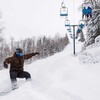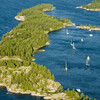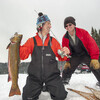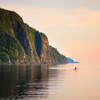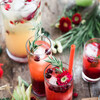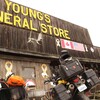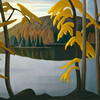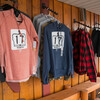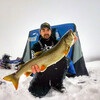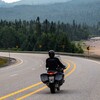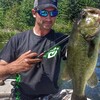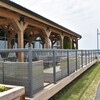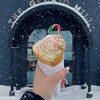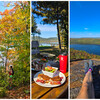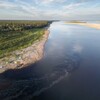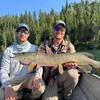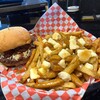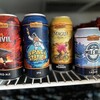
Jigging up Walleye in Algoma Country
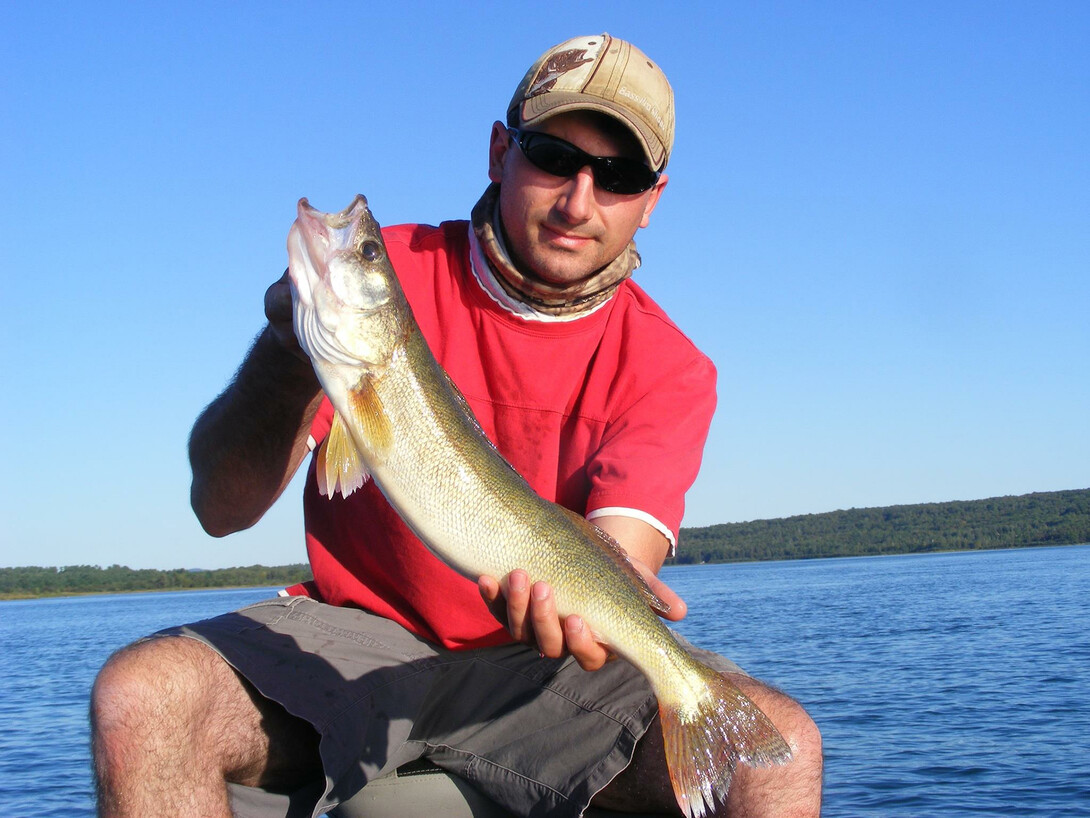
Walleye are the most sought-after game fish by anglers in search of fly-in, train-in, or drive-in fishing at lodges. There are countless locations all throughout Algoma Country that excel when it comes to the quality of walleye fishing. A tip to remember when going for your walleye catch is to stock up on jigs to guarantee a monster walleye.
A “jig” is defined as a lead sinker with a hook moulded into it, covered by a soft body to attract fish—but to be simple, a jig is a small ball of lead with a hook attached. You can almost always guarantee to see a jig in any tackle box you open, as they are the most versatile lure a fisherman can use. It's easy: drag it, hop it, drift it, cast it, swim it, rip it, jig it, or just let it sit on the bottom. On top of using it however you choose, you can literally put almost anything you want on the end of it, from any type of live bait to a soft plastic lure. A jig is one of the deadliest ways to put a lot of fish in the boat, and one of those fish that tends to bite jigs on a regular basis is the most popular fish in Northern Ontario: the walleye.
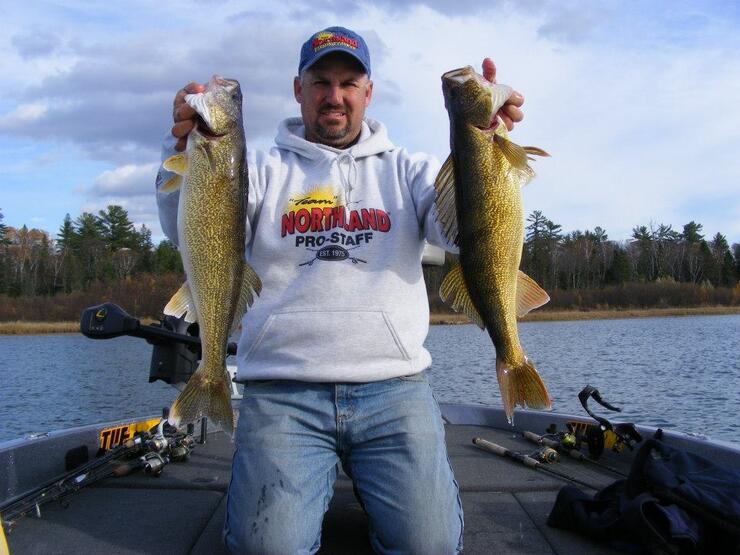
The SetUp
I am a stickler for having the right setup. I like to have things set up as technique-specific as possible. Having the right rod, reel, and line really makes all the difference on the water. It’s what connects you to the fish. I guarantee you will notice an increase in bites and hook-ups when you have the right gear for the right job.
Starting out with the rod.
There are so many to choose from, but there are also rod series that is specifically designed for walleye and whatever technique you're using it for. Denali Rods has a walleye-specific series of casting, spinning, and trolling rods that cover the whole spectrum. For vertical jigging, walleye spinning rods are the way to go. Your rod and line could vary greatly with the situation you are in, depending on water depth and clarity, the size of fish you are targeting, whether you're dealing with heavy current, and the structure or vegetation you're fishing.
To make it easy, I’ll break it down into a couple of good all-around setups I would use to fish it all. I like a rod that is anywhere from 7-foot to 6-foot 8-inch rod with a medium to medium-heavy action, with an extra-fast tip for detecting any bite you might get. For line, I always like to have braid, 10-pound Tufline Domin8 braid for my main line. It has no stretch and it allows you to feel absolutely everything that’s happening with your bait.
Whether you're hitting structure, going through it, or if you have something wrong with your bait, most of all you will detect almost every strike you get. Then add a fluorocarbon leader, by either tying on a swivel that will help with line twist or a line-to-leader knot like a uni-to-uni. Depending on water clarity, vary your leader length. For really clear water, I usually tie on at least a 10- to 12-inch leader. For dirty water, you can get away with as small as a 2-inch lead. Reels can be basic: either a 2500 series or 3000 series will do just fine. A 3000 series is just a little bit bigger reel that will allow you to have a little more line, and torque in deeper water and current situations.
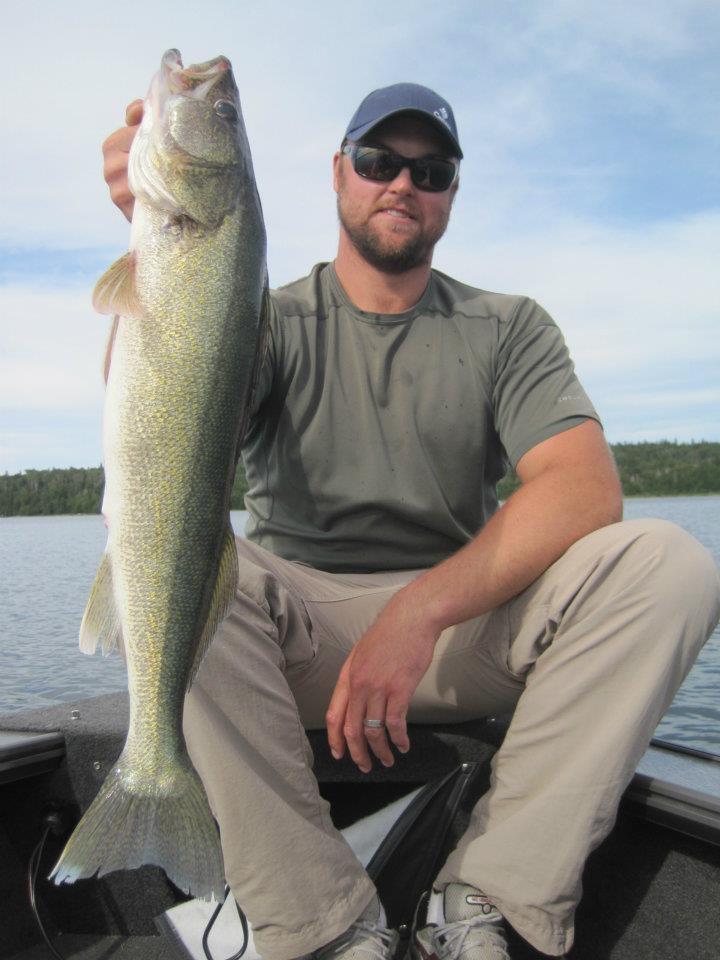
The Bait
There are nearly endless possibilities when it comes to jigs. They can be tipped with any live, dead or soft plastic bait in a tackle shop. When it comes to walleye, you just can’t beat live bait. Depending on the time of year or the main forage in the lake, you can choose what’s best for where you're fishing. Early in the season, minnows like red tail chubs, fatheads, dace, and shiners: are usually your best choice. Let the fish tell you what they want; pay attention to what exact type of minnow they are keying in on. As the year goes on and the water warms up, worms tend to work a lot better, and leeches can also be just as good in the warm months. When fall comes around, walleye will key back in on minnows and baitfish again, so add smaller sucker minnows in the mix. A little tip is to add a stinger hook to your jig if you're fishing with a bigger bait or minnow. It will help with short-striking fish that don’t get the whole jig in their mouth.
If you want to challenge yourself, or if you just don’t have access to a lot of live bait, soft plastics can catch a lot of walleye too, as long as you make the right presentation. So many soft plastics can be used for walleye like curly tail grubs, paddle tail swimbaits, minnow, leech, crawfish, and worm imitations. The choices can be overwhelming.
Try not to overthink things, and just keep it simple. Follow the same seasonal pattern as you would for live bait. Here are some of my favourite soft plastics: minnow imitations early in the year like a Gulp Alive Minnow, Berkley Powerbait Power-Minnow, or a Northland Impulse Smelt. In the hot summer months, a go-to is a Yum Walleye Grub, Berkley Power Night Crawler, or Gulp Alive Leech. Later in the year or when you notice the fish are more aggressive and feeding heavily, go back to the minnow imitations and try the paddle tail swimbaits like a Yum Pulse, Berkley Beat Shad, or a Northland Impulse Paddle Minnow.
A tip for rigging soft plastics is to always make sure you rig your baits nice, straight, and true. If you have any kink or bend, or if it's even slightly coming out of the bait in the wrong spot, this will throw off its action and make it twist or not look right in the water—to you or the fish. You want your baits to look as natural as possible to increase the number of fish you get to bite, and ultimately catch.

The How-To
Boat control and the way you jig and present the bait go hand in hand. With some of the huge advancements in technology these days, there are things that can make jigging incredibly easy. If you keep up with the fishing world, trolling motors have made huge leaps and bounds in the ways of controlling your boat with hand-held remotes and GPS capabilities. One of those advantages is something called spot lock or anchor mode; it allows you to keep your boat in place without having an actual anchor holding you in place. If you're fishing on a specific spot, hole or structure, this makes it as easy as possible to pitch, cast, or vertically jig your baits with ease, not having to worry about controlling your boat at all. All you have to think about is presenting your bait the way the fish want it.
Once again, that’s where you pay attention to what the fish are telling you. If you're getting bites popping it, hopping it, dragging it, casting it out, swimming it, laying it on bottom, or vertically jigging up and down directly under your boat, make the adjustment and stick to the one that’s getting you the most bites.
Or you might be on the other side of it like me, the average fishermen who doesn't have all these capabilities on his or her boat. Whether you have a small tiller motor or a bow mount trolling motor, in terms of jigging effectively you always want to be looking at your graphs. Having fish finders and graphs with GPS on them are essential. Make sure you are holding over the areas you want to be in, and not drifting off or getting out of place. It’s easy to get out of place, especially when fishing offshore when everything looks the same. Pay attention to bottom composition, depth, and speed.
While vertically jigging or jigging in general, it is key to have your boat in the right position. You always want your line straight up and down, not at any other kind of angle; not trailing beside the boat or dragging behind it. Not having proper boat control will result in your presentation not looking natural, and you won’t get the amount of bites you should be getting. Paying attention to where you are, and what your line, boat, and bait are doing, can pay off huge by the end of the day.
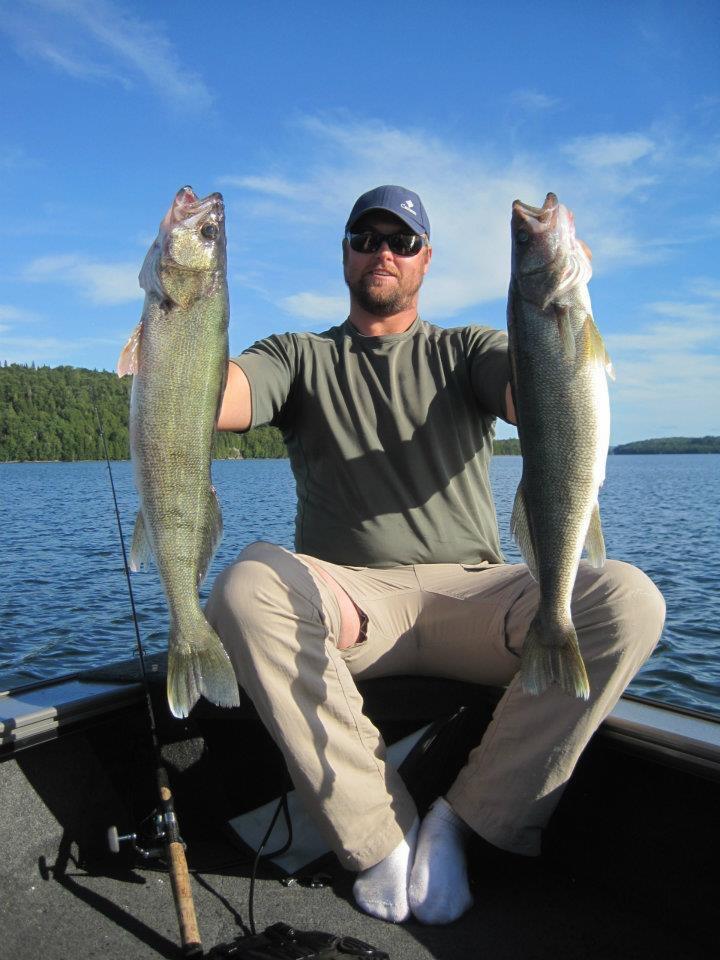
The End
Jigging is one of the oldest and easiest techniques to catch fish, but there is always so much more to it, and always much more to learn. Hopefully these tips can help better your techniques and increase your catch this year.
Never forget to take note on what the fish are telling you, and make those adjustments to increase your odds—it will help make you a better angler at the end of day.
Lastly, if you stay or fish at any of the amazing places in Algoma Country, be sure to share your experience so others can see what a truly special region we live in. Hopefully they will be able to experience it themselves and keep sharing the great things we have to offer.
Recommended Articles

The Group of Seven in Algoma

9 Facts to Know about the Agawa Canyon Tour Train


